Diversity
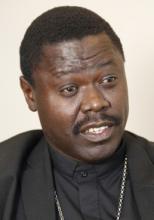
After months of violence in the Central African Republic, signs of hope emerged following Friday’s esignation of interim President Michel Djotodia and Prime Minister Nicholas Tiengaye.
But Roman Catholic Archbishop Nestor Desire Nongo-Aziagbia of Bossangoa said that although guns had gone silent, the crisis was far from over.
“The shooting has ceased, but the tensions are still there,” Nongo-Aziagbia said Monday. “Resignation is a first step towards solving the crisis.”
The resignations at a regional summit in neighboring Chad sparked wild celebrations among Christians in the capital, Bangui. The president was a Muslim.

An Iraqi woman dons a black hijab but bares her thighs. A Lebanese woman wearing a sheer blouse curls up on a bed, both innocent and seductive. An attractive young Iranian couple shares breakfast at a small table, seemingly oblivious to the tank looming just a few yards away.
There are no harems, belly dancers, or male oppressors in this photography show, nor any of the other Middle Eastern stereotypes that Westerners generally associate with that far away, often misunderstood, region.
“She Who Tells a Story,” a photo exhibit now showing at Boston’s Museum of Fine Arts and headed to other U.S. museums, features the work of 12 women from the Middle East who shatter stereotypes with works that are provocative, beautiful, mysterious, and surprising, all at the same time.

I'VE NEVER FELT as powerful and proud of my community as I was while walking down the middle of Franklin Avenue in Minneapolis on a cold evening in November with hundreds of other Native activists and allies. We were marching from the heart of the Minneapolis American Indian community to the Hubert H. Humphrey Metrodome to speak out against the Washington Redsk*ns mascot.
Hundreds of American Indians and allies rallied outside the Metrodome to demand that Dan Snyder, owner of the Washington professional football team, change the team’s name and mascot in spite of Snyder’s dissent. The owner’s unwavering commitment to keeping the Redsk*ns name became evident when earlier this year he stated, “We’ll never change the name. It’s simple. NEVER. You can use caps.”
Standing among supporters and friends, I looked on as the community joined together in drumming, dancing, and singing, with American Indian Movement co-founder Clyde Bellecourt serving as the rally’s emcee. Several local elected leaders addressed the crowd, including U.S. Rep. Betty McCollum, co-chair of the Congressional Native American Caucus, and the mayor-elect of Minneapolis, Betsy Hodges, days after winning her election for mayor. The two joined an avalanche of elected leaders calling on Snyder and NFL Commissioner Roger Goodell to change the team’s name.
More than 20 years prior, another protest had been held at the Metrodome for Super Bowl XXVI, a game between the Washington Redsk*ns and the Buffalo Bills. That protest included Clyde Bellecourt’s brother, Vernon, leading the charge with Sen. Paul Wellstone, a friend and champion of the American Indian community. Two decades later, the conversation has changed and momentum is on our side. Even President Barack Obama joined the cause in saying, “I’ve got to say, if I were the owner of the team and I knew that there was a name of my team—even if it had a storied history—that was offending a sizeable group of people, I’d think about changing it.”

DOMINIC WAS 17 years old when the incident occurred. Dressed and ready to go to church, he walked out of his home in the Bronx just a few minutes ahead of his parents. All of a sudden, undercover police officers came out of nowhere, grabbed him, and threw him to the ground. As his parents came outside and discovered this scene, fear gripped them as they screamed to the officers, “What are you doing to my son?” “He fits the description. You stay out of this!” the officers replied. His mother pleaded, “Sir, he hasn’t done anything. He has been with us the whole time.”
While legal and political measures are being undertaken by opposing factions for and against the stop, question, and frisk practices of the New York Police Department, the debate rages. The fact remains, no matter what side you are on, considerable damage has already been done to a generation of African Americans and Latinos (particularly youth), not only in New York City but in other cities that have adopted this model of policing.
According to a recent analysis by the New York Civil Liberties Union, in 2012 “New Yorkers were stopped by the police 532,911 times. 473,644 were innocent (89 percent).” This means that out of more than half a million who were stopped, only 59,267 people were charged with any sort of illegal activity. In addition, 284,229 (55 percent) were African American and 165,140 were Latino (32 percent), most of them law-abiding citizens who were targeted, stopped, questioned, frisked, and found innocent. What is further troublesome is that not all actions conducted by officers were documented, so the actual number of those impacted negatively is even higher.
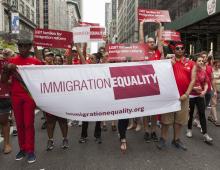
I’m a big fan of the TV show Mad Men, which takes place in the midst of the Madison Avenue advertising agencies back in the ’60s and ’70s. Sure, I enjoy the drama and the “cool factor” of Don Draper and his cavalier ad team. But for me, the most fascinating part is all of the cultural norms of the time that seem fairly shocking now, only a few decades later.
Of course, there’s all the drinking and smoking in the office, but beyond that, the way that non-Anglo employees and the women in the workplace are treated would today be grounds for a lawsuit, if not public shaming for such brazen chauvinism. The thing that’s hard to remember is that, although we see such behavior as morally offensive today, it was simply normal back then.
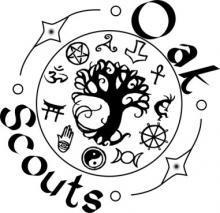
As the Boy Scouts of America gets ready to admit gay youth, one Missouri organization has already broken away, but not because it favors tradition.
Oak Scouts is designed to be a safe space for everyone, regardless of faith or sexual orientation.
It all started when Kerry Kasten began guiding children’s meetings at a nature preserve and nondenominational Shamanic Wiccan church in Boonville. The more Kasten met with the children, the more she realized the need for a new type of scout troop.
“I realized there are all these parents out there who were not wanting to go into the mainstream scouting program due to disagreements in faith and sexual orientation,” Kasten said. “They wanted to go somewhere they felt safe being gay or pagan or not mainstream and express how they felt.”
On Wednesday, the Boy Scouts of America will begin accepting openly gay youths, a historic change that has prompted some churches to drop their sponsorship of Scout units because of the new policy.
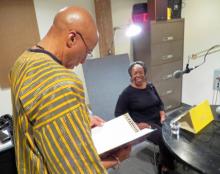
Kwanzaa began Wednesday but two veteran storytellers began planning for the weeklong celebration of the Western African diaspora back in October.
That’s when Wilmington, North Carolina, storyteller Joyce Grear and Madafo Lloyd Wilson, host of A Season’s Griot, met to decide what story Grear should read this year.
They sat in the wide, barren conference room between radio studios at WHQR Public Radio, where A Season’s Griot has been produced for more than two decades as the only nationally syndicated Kwanzaa radio show in the country.

“Bubble living” might be delusional, but it expresses deep and serious yearnings.
Take “Champagne music” maker Lawrence Welk. His music variety show on ABC was built on perpetuating the squareness of a prewar world being challenged by postwar change.
My father was still watching Welk reruns 40 years after it ceased production in 1971. They reminded him of a world long supplanted.
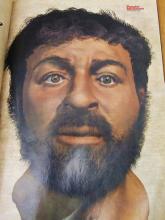
Conservative talk show host Megyn Kelly claimed on her Fox News show last week that “For all you kids watching at home, Santa just is white ... just because it makes you feel uncomfortable doesn’t mean it has to change, you know, I mean, Jesus was a white man, too ... that’s a verifiable fact, I just want kids to know that.”
This statement was in response to a Slate piece by Aisha Harris, “Santa Should Not Be a White Man Anymore,” which notes her confusion between seeing a black Santa figurine in her home while white Santas were popularized elsewhere at the mall and her school. Because the real history of St. Nicholas is so far removed from his present iteration as Santa Claus, she argues that it would be easier and less culturally problematic to change him into a penguin. This avoids questions of race and culture and makes him accessible to all. While I see her point about wanting to avoid cultural problems, it might be a good idea to confront the underlying issue of racism in America rather than continue to ignore it.
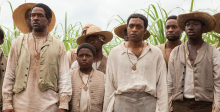
IN OCTOBER, Sojourners hosted a Washington, D.C. premiere for the faith community of the extraordinary film 12 Years a Slave. The compelling story about Solomon Northup—a free man from New York who was kidnapped and sold into slavery—is an accurate and well-produced drama, worth seeing for its cinematic merits, but primarily as a start to a conversation about race in America that is long overdue.
In her New York Times review titled “The Blood and Tears, Not the Magnolias,” Manohla Dargis wrote that 12 Years a Slave “isn’t the first movie about slavery in the United States—but it may be the one that finally makes it impossible for American cinema to continue to sell the ugly lies it’s been hawking for more than a century.” The film reveals how morally outrageous the slave system was, and it is very hard to watch.
The enslavement of millions of people of African descent by white Americans was always violent, and too intense for most white people to really accept the truth. Most white people, white Christians, and white churches tolerated slavery for 246 years. This historically horrendous evil existed because we tolerated it. That’s why evil always continues to exist: because we tolerate it.
What do we tolerate today? We tolerated the gratuitous evil of slavery, and still tolerate the devaluing of black lives. We tolerate completely dysfunctional urban schools, but would we still do so if they were full of young white children? We tolerate a criminal justice system where the racial disparities between white and black arrests, convictions, and sentencing are abundantly clear, resulting in the mass incarceration of men of color. We tolerate murder rates for people of color that we would never tolerate for whites. We tolerate racial profiling of young black men, with results that we would never accept for our white teenage boys. And we tolerate deliberate and clear political efforts to diminish the votes of minority communities.

I just read the Sojourners blog, The Most Ignored and Undervalued People Within Churches Today, challenging churches to reach out to marginalized people. I was saddened but not surprised there was no mention of the exclusion of the largest group of people excluded every Sunday morning: those with hearing loss.
I have always considered myself “progressive,” ready to take up the cause of those in society that needed advocacy. While I was a pastor of a church, I worked toward making our building wheelchair-accessible and dreaming of the day when we could hire an ASL captioner at least once a month.
Yet in my naivety I believed that adult-onset hearing loss could be countered by a good hearing aid, allowing the user to have comprehension close to that of a person with “normal” hearing.
That misguided belief was tested five years ago when, at 63, I became deaf after knee surgery. It was seven months before I received a cochlear implant, but soon discovered it was inadequate for situations I would encounter daily: meetings, restaurants, movies and — most ironically — churches.
At the time, my spouse, Sheryl, and I were awaiting her ordination to find an area where we could continue our ministry. Life, however, had other plans. As we struggled to come to terms with the full impact of my initially devastating deafness, we learned a lot about being deaf that we did not know before I tumbled head first into the community of people with hearing loss.
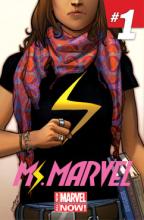
When Marvel Comics announced the debut of its latest superhero — a 16-year-old Pakistani-American Muslim from Jersey City, N.J. — it was correctly seen as a positive development. Created and written by two American Muslim women, Kamala Khan (aka Ms. Marvel) holds promise.
But while Khan is a comic book character, she should not become a caricature.
“Her brother is extremely conservative,” the editor, Sana Amanat, told The New York Times. “Her mom is paranoid that she’s going to touch a boy and get pregnant. Her father wants her to concentrate on her studies and become a doctor.”
American literature is replete with tales of assimilation, from “My Antonia” to “The Joy Luck Club.” The overprotective mother and the demanding father are staples of the genre. But with Khan, there is an additional twist: The “conservative” brother.

Alec Baldwin was caught on video venting his rage against a photographer and using a homophobic slur. I actually don’t follow Alec on Twitter or keep up with celebrity news on TMZ, but apparently he’s put similar slurs in writing. In this case, however, he denies using a homophobic slur, saying he is being misquoted. And as proof that he is not homophobic, in fact just the opposite, he points to his work on behalf of marriage equality with GLAAD. In defense of his actions in the video, he insists he was only defending his family’s privacy — in the video we can clearly hear him shouting at the photographer to stay away from his wife and his baby. Here’s a brief excerpt from his blog post in which Baldwin expresses his desire to protect his family and neighbors from media harassment:
I am concerned for my family. In Bloomberg's New York, forty or fifty paparazzi are allowed to block streets, inconvenience homeowners, workers and shoppers, and make life miserable for my neighbors. Photographers have tripped and fallen on babies in strollers on my block. They have nearly struck my wife in the face with microphones. They provoke me, daily, by getting dangerously close to me with their cameras as weapons, hoping I will react. When I do, the weapon doubles as a device to record my reaction. And then, apparently, I lose every time.
And here’s what the prominent blogger Andrew Sullivan had to say. He is among many who called for accountability from Baldwin, GLAAD and his current employer MSNBC. (At this writing MSNBC has suspended Baldwin’s show for two weeks.) Here’s what Sullivan said:
Look: Baldwin’s anger… was thoroughly merited. But he continually resorts to this kind of homophobic poison when he’s angry. Just as Mel Gibson revealed his true feelings about Jews in his drunken rant, so Baldwin keeps revealing his own anti-gay bigotry. These outbursts reveal who he actually is. (Emphasis in original)
So which is it? Is Baldwin a raging (literally) homophobe or is he a decent guy protecting his family and neighbors? Whenever I encounter an either/ or choice like this, I know I am in the presence of a possible scapegoating incident for three reasons.

Last week, a controversy erupted over Twitter when it came to light that a prominent evangelical conference with 110 speakers only had four women on stage.
Journalist Jonathan Merritt, did a quick informal study and discovered that out of 34 prominent evangelical conferences, only 19 percent of speakers at plenary sessions were women.
This is a problem.
As a white male evangelical and a black female evangelical who spend a lot of time speaking at conferences, events, and college campuses, we know from experience this is a problem.
Conference spaces have become one of the primary discipleship spaces for evangelicals. These are the spaces where evangelicals go to learn all that it means to be a follower of Jesus.

Churches are supposed to be communities that represent Christ’s infinite love — and many of them do — but certain groups of people seem to be continually ignored, alienated, undervalued, and simply lost within American churches. Leadership structures, social expectations, religious values, and traditions within faith communities have a tendency to favor some groups but not others, resulting in discrimination instead of equality, exclusion instead of acceptance, and prejudice instead of fairness.

At the end of a three-day tour, the Saudi-based Organization of Islamic Cooperation told Buddhist-majority Myanmar to repeal “laws restricting fundamental freedoms” after more than 240 Muslims were killed by Buddhist mobs during the past year.
Before the OIC delegates left Myanmar on Saturday, they visited minority ethnic Rohingya Muslims who fled the violence and are now living in squalid camps along the border with Bangladesh in Myanmar’s Arakan state, also known as Rakhine.
Headed by Secretary General Ekmeleddin Ihsanoglu, the OIC delegation called on the government to continue legal reforms, The New Light of Myanmar newspaper reported.
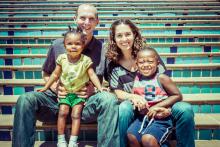
When people first see our family, they often do a bit of a double take. At first glance, we don’t necessarily look like we go together. My husband and I are both Caucasian, with a quarter Cherokee in me that gives me a little bit of color. Our children are both beautiful African Americans of different shades. When we’re out in public and my son calls out to me, “Mom!” or our daughter calls to my husband, “Dad?” it just doesn’t look “normal.”
The interesting thing that I have learned through being an adoptive parent, especially in a transracial adoption, is that we are a visual testimony to the Kingdom of God. Not everyone might receive us or see us in this way, but the reality is that as Christians, we have all been adopted by God to be a part of his family. Galatians 4:4-6 says this: “But when the right time came, God sent his son, born of a woman, subject to the law. God sent him to buy freedom for us who were slaves to the law, so that he could adopt us as his very own children. And because we are his children, God has sent the Spirit of his Son into our hearts, prompting us to call out, ‘Abba, Father.’”
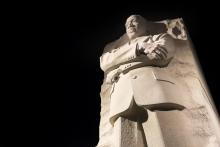
I must use the adverb “almost” because there is a necessary distinction between all and some. It is the difference between mighty and almighty.
But we must never forget that whatever is mighty can harness the power to destroy lives, families, communities, institutions, and nations. This is what racism does on a daily basis.
We have, to some degree, lost the will and/or the capacity to identify and challenge this destructive and powerful force in our culture and institutions.
This Advent season presents the church with a great moment — an opportunity — to sharpen its discernment. It is an opportunity for the church and the world to experience a new birth in love, racial justice, and reconciliation.
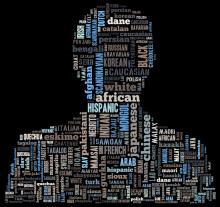
Racism continues to plague our nation. From disparities in the criminal justice system to attacks on voting rights, many of us have sat by as our brothers and sisters are treated unequally. It doesn’t have to be this way.
As “Peace Pastor” Marty Troyer describes in “Subverting the Myth” (Sojourners, December 2013), with a lot of hard work and honest dialogue, racial reconciliation is possible.
People of faith are leading the new movement for racial justice. To become an agent of reconciliation, sign the One Church, One Body pledge and check out the resources below.
ARTICLES
- By Accident of Birth, by Jim Wallis
- Can We Talk? White Privilege Today, by Andrea Ayvazian and Beverly Daniel Tatum
- In the Middle: The Challenge of Racial Reconciliation, by Catherine Meeks
- Ooh! Is That Racism on Your Shoe?, by Chris Rice
- Racism: America’s Original Sin, by Jim Wallis
- To Move Beyond Denial, by Yvonne V. Delk
- Whose America is It?, by Anthony A. Parker
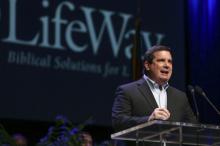
The president of Southern Baptist retailer LifeWay Christian Resources has apologized for publishing Vacation Bible School material nearly 10 years ago that “used racial stereotypes that offended many in the Asian American community.”
Thom Rainer, who became president and CEO in 2006, said Wednesday in a video message at the Mosaix conference in Long Beach, Calif., that the “Rickshaw Rally” curriculum is “still a point of hurt for some.”
“I am sincerely sorry stereotypes were used in our materials, and I apologize for the pain they caused,” Rainer said.